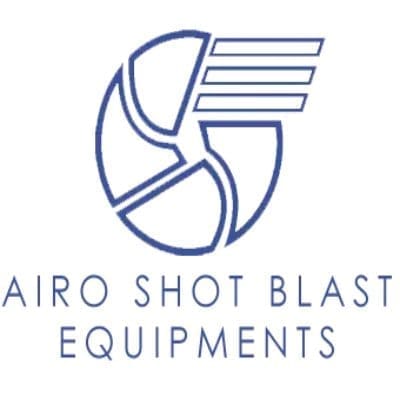
The Lifespan of Abrasive Media: Maximizing Usage & Minimizing Cost
Understanding Abrasive Media Lifespan
Abrasive media, whether steel shot, grit, aluminum oxide, glass beads, or ceramic media, plays a pivotal role in surface preparation processes. The lifespan of each type of media varies significantly depending on usage conditions, blasting equipment, substrate material, and maintenance practices. In industrial settings, optimizing the media lifespan directly reduces operational costs while maintaining surface finish quality.
Factors Influencing Abrasive Media Longevity
1. Media Type and Composition
Steel Shot and Steel Grit: These are among the most durable abrasive media. It can mostly used in shot blasting machine with proper use, steel shot can be recycled up to 2000 times, while grit can last around 1000 cycles, depending on hardness (typically 40–65 HRC).
Aluminum Oxide: Offers excellent cutting performance but breaks down faster, with a lifespan of 4–7 cycles on average.
Glass Beads: Recyclable up to 30–50 cycles, depending on air pressure and nozzle distance.
Ceramic Beads: Engineered for durability, lasting 60–100 cycles in optimal conditions.
2. Blasting Pressure and Distance
Excessively high pressure accelerates media degradation. Ideal pressure should be calibrated to the minimum effective PSI for the required surface profile. Similarly, maintaining a proper nozzle-to-surface distance (generally 6–10 inches) can extend the usable life of abrasives.
3. Surface Hardness of Workpiece
Softer substrates (like aluminum or plastic) are less destructive to abrasives compared to harder surfaces such as steel or cast iron. When blasting hard materials, abrasive fragmentation increases, shortening media lifespan.
4. Reclamation System Efficiency
A well-designed media reclamation system, including air-wash separators, magnetic separators, and vibratory screens, ensures contaminants like dust, rust, and broken media particles are effectively removed. Poor reclamation leads to premature media failure and inconsistent surface finishes.
5. Operator Technique
Improper usage—such as angling the nozzle incorrectly or blasting at unnecessary dwell times—can waste media. Training operators in efficient blasting techniques minimizes abrasive consumption.
How to Maximize Abrasive Media Usage
Implement Media Quality Inspection
Regular inspection using sieve analysis and hardness testing helps determine when media should be replaced. Monitor for:
Fines and dust buildup
Loss of shape (especially with angular grit)
Reduction in impact energy due to fragmentation
Use the Right Abrasive for the Job
Select abrasives not only based on cost but also considering:
Hardness of the target surface
Desired profile
Blast machine type
For instance:
Use steel shot for peening and heavy-scale removal.
Use glass beads for cosmetic finishes.
Choose ceramic media when durability and consistent finish are paramount.
Optimize Blasting Parameters
Air Pressure: Maintain optimal levels; excess pressure damages media.
Nozzle Wear Monitoring: Worn nozzles affect media acceleration and pattern.
Cycle Time: Avoid over-blasting; once the desired finish is achieved, halt the process.
Upgrade to Advanced Blast Systems
Modern automated shot blasting machines with closed-loop media handling systems, automatic separators, and dust collectors dramatically reduce media loss. These systems help maintain abrasive integrity and reclaim reusable media efficiently.
Cost Minimization Without Quality Compromise
Invest in Reusable Abrasives
Though more expensive upfront, media like ceramic or stainless steel shot offer long-term savings due to multiple reuse cycles. Their consistent shape also ensures uniform surface profiles over time.
Maintain Equipment Proactively
Regular maintenance of:
Blast wheels or nozzles
Reclaim systems
Dust collectors
...ensures minimal loss and prevents contamination that leads to early abrasive breakdown.
Track Media Consumption Metrics
Implement KPIs such as:
Cost per square meter of surface treated
Media cycles per batch
Dust generation rate
This data helps fine-tune blasting parameters and forecast abrasive media replacement more accurately.
Recycle Smartly
Integrate media classifiers that separate reusable grains from broken particles and contaminants. This reduces the purchase frequency of new abrasives and maintains performance consistency.
Comparing Common Abrasive Media Lifespan and Efficiency
Abrasive Media Average Lifespan (Cycles) Best Use Cases Reusability Level Initial Cost Cost Efficiency Steel Shot 1500–2000 Peening, heavy cleaning Very High Moderate Excellent Steel Grit 800–1200 Rust removal, surface prep High Moderate Very Good Aluminum Oxide 4–7 Paint stripping, aggressive cleaning Low High Moderate Glass Beads 30–50 Cosmetic finish, light deburring Medium Low Good Ceramic Beads 60–100 Aerospace, medical device finishing High High Very Good Plastic Abrasives 5–10 Delicate substrates, composites Low Moderate Niche-Dependent
Warning Signs That Abrasive Media Needs Replacement
Reduced cleaning efficiency
Visible contaminants on blasted surfaces
Increased dust in reclaim system
Unstable or uneven surface finish
Timely media replacement prevents rework, preserves equipment, and ensures compliance with surface roughness specifications.
Environmental & Safety Considerations
Using high-durability abrasives means less frequent disposal, reducing environmental impact and waste management costs. Furthermore, maintaining clean media minimizes airborne dust, enhancing operator safety and meeting OSHA or local pollution control board standards.
Conclusion
Maximizing the lifespan of abrasive media requires a strategic combination of the right media selection, proper blast system configuration, effective reclamation, and disciplined operational practices. By adopting a data-driven, quality-focused approach, we can significantly reduce media consumption, enhance productivity, and lower costs, all while maintaining the highest standards in surface preparation outcomes.

Airo Shot Blast is a leading manufacturer of advanced shot blasting machines, delivering precision, durability, and innovation for industrial surface treatment.
+91-9119207701
Newsletter
Subscribe now to get daily updates.


